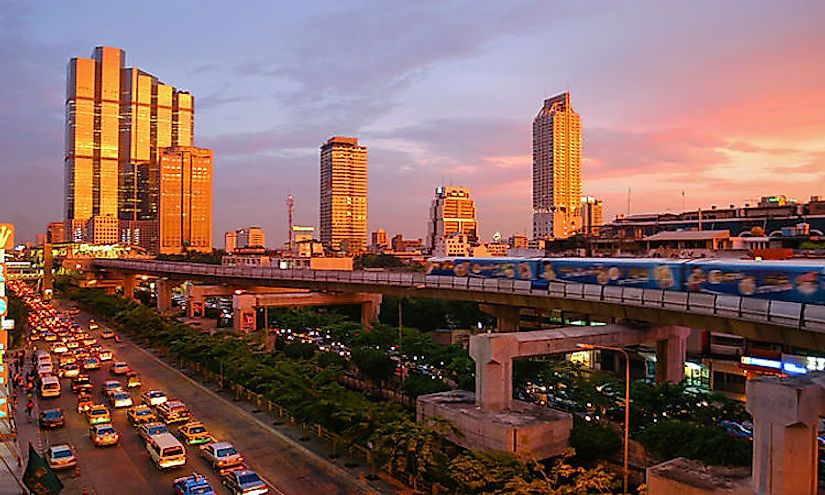The Biggest Cities In Thailand

Thailand is a country located in Southeast Asia at the center of the Indochinese peninsula. It encompasses an area of 198,000 square miles, making it the 51st largest country in the world. Its population size is 67.959 million. A large percentage of this country’s residents live in urban areas and cities. This article takes a look at the most populated cities in Thailand.
The 3 Biggest Cities In Thailand
Bangkok - 5.8 Million
Bangkok is by far the largest city in Thailand with 5.8 million residents. In the entire metropolitan area, the population is over 14 million. It encompasses an area of around 605.7 square miles. Because of its size, Bangkok is considered a primate city, which means it is significantly larger than any other urban area in the country. This city was first established during the 15th century as a trading center and has been an important part of the country’s development ever since. Today, Bangkok is the economic center of Thailand, making up 29% of the gross domestic product (GDP). Its biggest economic sector is in wholesale and retail. Additionally, this city is one of the most popular tourist destinations in the world.
Nonthaburi - 270,609
The second most populated city in Thailand is Nonthaburi. This city has a population size of 270,609, which is significantly less than Bangkok. Because it is located near Bangkok, Nonthaburi is often considered a suburb of the much larger city. Residents here are able to use the Bangkok Mass Transit Authority public transportation facilities. This city has been established since before European colonization. It became a provincial administrative center in 1917.
Nakhon Ratchasima - 174,332
Nakhon Ratchasima is the third largest city in the country and has a population size of 174,332. In the entire metropolitan area has a population of 444,023. This city is located on the western side of the Khorat Plateau, which was previously the border between Siam and Laos. It was established in the 17th century as a military fort of the Ayutthaya Kingdom. Since then, the city has continued to be an important economic and political century. Its economy is largely dependent on agriculture, particularly rice, tapioca, and sugar. These three crops provide the majority of employment opportunities in the district. Additionally, Nakhon Ratchasima serves as a retail center for the region, including Laos and Cambodia.
Environmental Threats
The large population size of Thailand has prompted a number of environmental threats throughout the country. This is particularly true of Bangkok, which continues growing rapidly. Urban runoff and untreated sewage are contributing to water pollution. Extensive agricultural practices are resulting in deforestation, water overuse, and pollution from fertilizers and pesticides. The country's constant population growth is leading to increased urban development, which land degradation, habitat loss, and an overall decrease in biodiversity. In the large urban areas here, industrial waste, medical waste, and household waste. These environmental threats influence residents’ lives and present a challenge for the local government. The government of Thailand has considered allocating more financial resources for environmental public awareness education. This education would focus on reducing, recycling, and reusing. Additionally, business regulations need to be reformed to ensure better environmental practices.
The 10 Biggest Cities In Thailand
| Rank | City | Population |
|---|---|---|
| 1 | Bangkok | 5,782,159 |
| 2 | Nonthaburi | 270,609 |
| 3 | Nakhon Ratchasima | 174,332 |
| 4 | Chiang Mai | 174,235 |
| 5 | Hat Yai | 157,467 |
| 6 | Udon Thani | 155,339 |
| 7 | Pak Kret | 152,881 |
| 8 | Chaophraya Surasak | 132,172 |
| 9 | Khon Kaen | 129,581 |
| 10 | Ubon Ratchathani | 105,081 |











